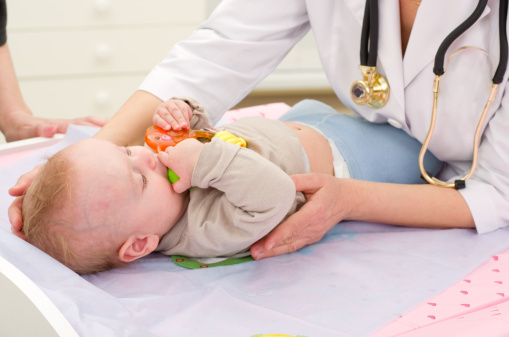Predictors of sub-clinical enterovirus infections in infants
Predictors of sub-clinical enterovirus infections in infants
 Enterovirus infections are common, although most often sub-clinical. The present purpose was to assess the impact of breastfeeding and other factors on enterovirus infections in infancy.
Enterovirus infections are common, although most often sub-clinical. The present purpose was to assess the impact of breastfeeding and other factors on enterovirus infections in infancy.
A prospective observational study was carried out on a population-based cohort of 639 Norwegian infants aged 3-12 months. The outcome was enterovirus RNA measured in monthly stool samples. Data on underlying determinants, such as dietary feeding and household factors, were reported in parental questionnaires. Multivariable logistic regression was performed to allow for common confounders. Statistical analyses were performed by GLLAMM using Stata 9.2, which corrects for subject-specific random effects.
The prevalence of enterovirus in stools was 11.1% (475/4279). Risk of enterovirus infection decreased with increasing number of daily breastfeeds; the effect was most pronounced at the age of 3 months [odds ratio (OR), 0.85; 95% confidence interval (CI) 0.8-0.9, P < 0.001], gradually declining thereafter, reaching no effect at 11 months. Increased risk was associated with having one or more sibling(s) (OR 1.89; 95% CI 1.2-3.0), particularly if they attended daycare (OR 2.46; 95% CI 1.4-4.2), and with increasing exposure to other children (OR 1.04; 95% CI 1.0-1.1). There was a tendency towards higher prevalence of infection when a household's drinking water came from a well, and a protective effect of owning a dog or cat.
Several factors may modify the risk for enterovirus infections in the first year of life. This study supports the protective effect of breastfeeding. The protection decreased with age and increased with dose of ingested milk.
Publications
Witsø, E., Cinek, O., Aldrin, M., Grinde, B., Rasmussen, T., Wetlesen, T. and Rønningen, K. (2010). Predictors of sub-clinical enterovirus infections in infants: a prospective cohort study. International Journal of Epidemiology, Vol. 39, pp. 459-468, doi: 10.1093/ije/dyp333 .
Financing
Norwegian Institute of Public Health

